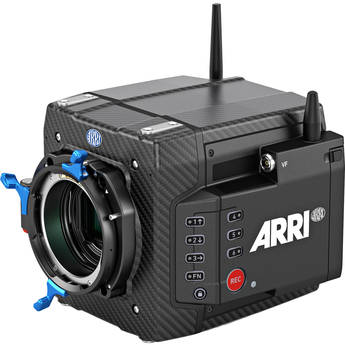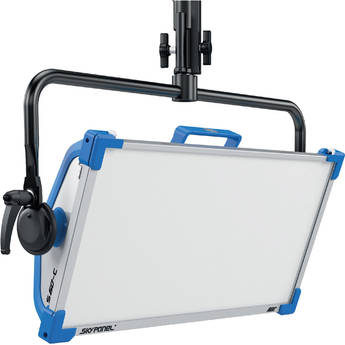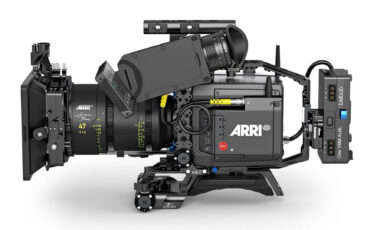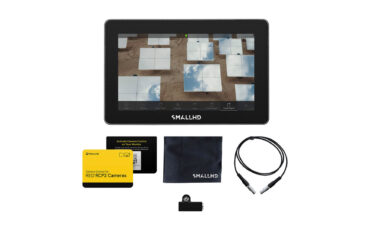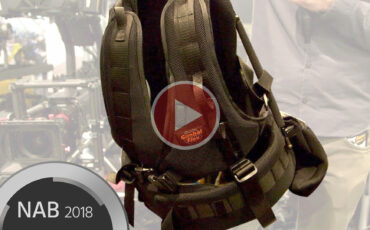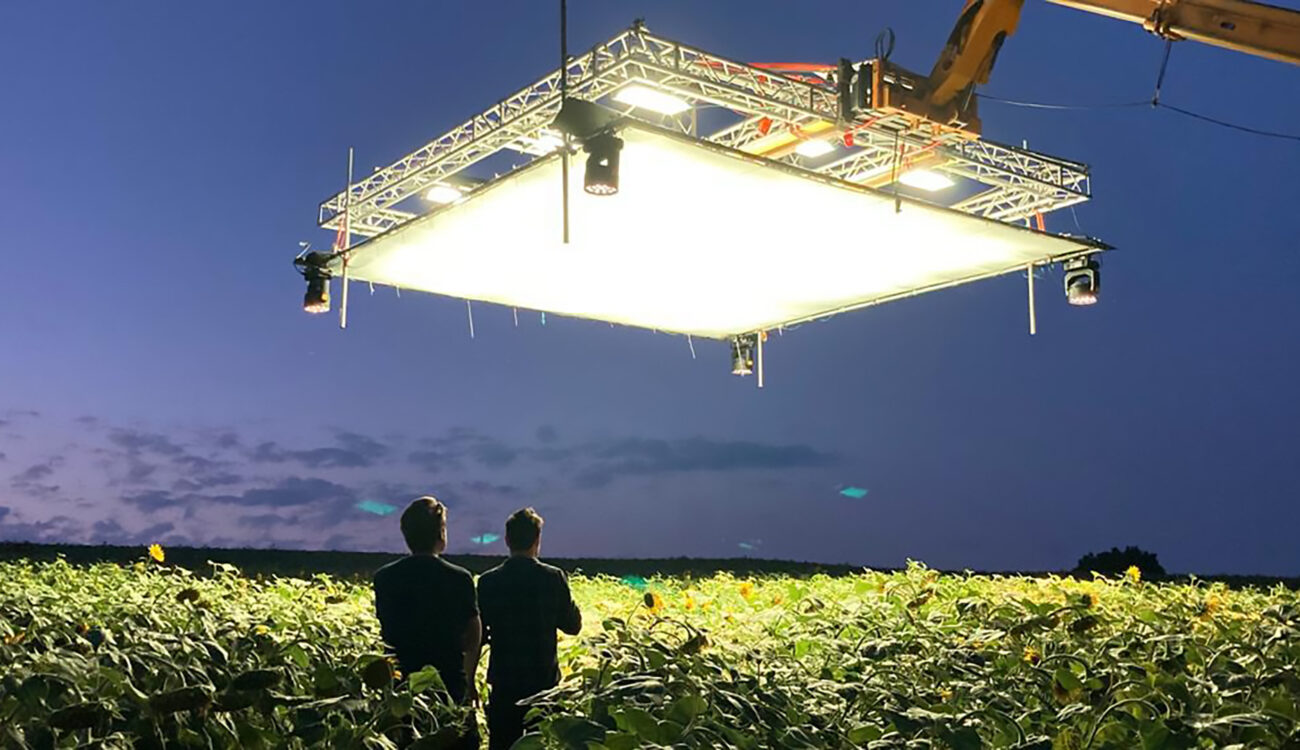
Austrian psychological thriller “Heimsuchung”, which was released in April this year, was a pleasant surprise when it arrived in cinemas. An understated, yet sometimes deeply unsettling drama about the effects of alcoholism on generations within one family, it told a touching story while also impressing visually.
For many of the people involved in the production, it was their first feature-length film, although having had years of experience in their field, mostly in commercial, documentary, and short film work.
An important scene
One scene that really stood out was the night scene in the sunflower field towards the end, where the main character faces up to the demons of her past. It was filmed on location at night and looks great. We wanted to find out how they managed this interesting look and talked to DP Alexander Dirninger as well as gaffer Alex Haspel.
CineD (Q): Alexander Dirninger, how soon did you get involved in this project?
Alexander Dirninger: Achmed Abdel-Salam, the writer and director, had a first draft of the script in 2016 and had already approached Glitter & Doom, the production company. I got involved in 2018, round about the time the funding phase began. At the beginning of 2021, the project was completely funded and we started shooting at the end of July 2021.
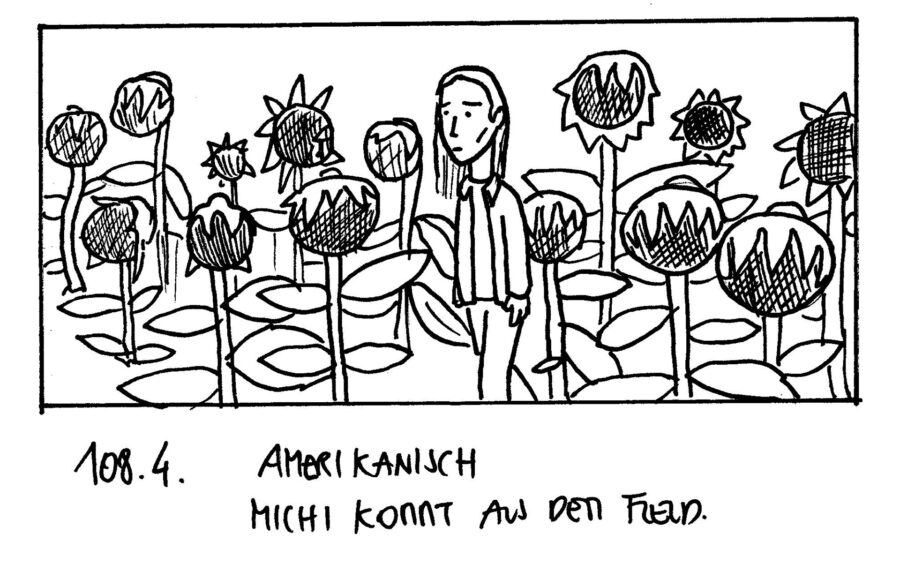
Q: Was there a certain look that you were going for? Did you have any inspiration?
Alexander Dirninger: Yes, we showed each other films and scenes we thought would work as inspiration. Achmed has a very profound knowledge of horror films, so we also watched a lot of those, talking about what we liked about them and what we didn’t like. We also used still photographs and paintings for inspiration.
We very much liked the vibe of the work of Italian Painter Nicola Samori, who paints dark and classical-looking portraits and then uses special techniques to give them a very eerie, unsettling kind of look. We wanted to go for this kind of feeling with the visual style of the film while keeping everything grounded in realism.
Q: At what point did colorist Lee Niederkofler become involved?
Alexander Dirninger: Also pretty soon. Together with Achmed, we developed some looks, some for day scenes and some for night scenes that we then imported into the camera and used for shooting the respective scenes. The looks were helpful during the shoot, but nevertheless, we started from scratch when we did the color grading of the film. We wanted the look and feel of the atmosphere of the final edit while deciding on the final look for the film.
Lee was also involved in the decision of shooting ProRes instead of RAW. The ProRes of the Alexa has very good quality. We decided it would be adequate for what we are planning to do and we would have a smoother workflow and also save on disc space. We never regretted that decision during the whole process.
Q: Was there a discussion about trying a Day-For-Night effect on this scene?
Alexander Dirninger: Yes, of course, since it would have made work easier, especially when working with child actors. But in the end, we decided to do the night shot mostly because the atmosphere in the field is totally different during the day and during the night. Different animals are active, and the sound ambiance varies greatly, and we just felt it was the right thing to do.
Alex Haspel: Also, the movie is very much about what you don’t see as opposed to what you actually can. So it was also a good idea to start with the darker image.
Camera equipment used
Q: What equipment did you use on set for this shoot?
Alexander Dirninger: We shot on an ARRI Alexa Mini with Cooke S4 lenses on ProRes 4444 in 3.2K. You can see all the settings we used that night in the monitor’s screenshot.
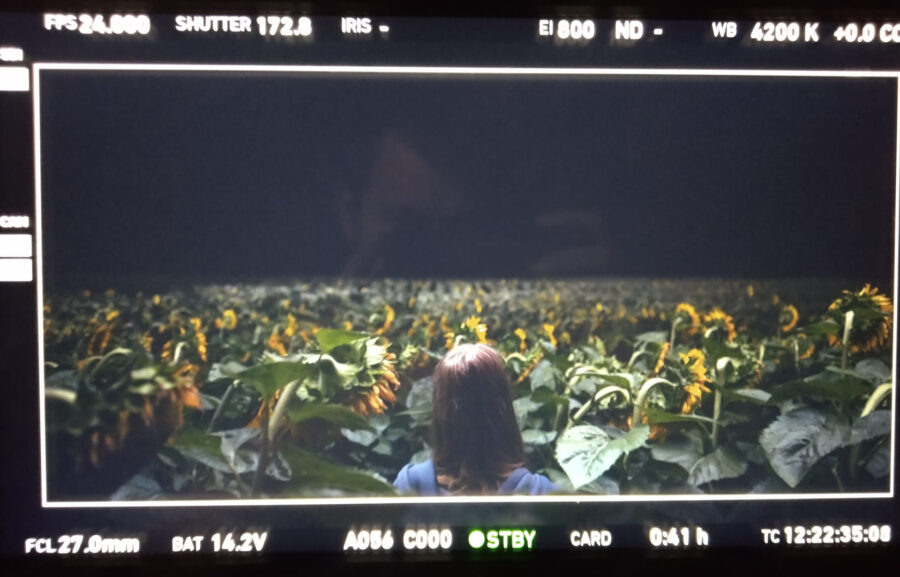
For camera movement, we used a Magnum and a Dana Dolly, as well as an UBangi Slider. We had a Ronin 2 that our Gripper Karlo Barber operated. He also adapted the Ronin to make the whole rig slimmer, so we could move around more easily in the narrow corridors between the sunflowers. I sometimes also used an Easyrig Vario 5 for handheld shots. For monitoring, we had a Small HD 5’’ on the Camera itself. The signal was sent via a Teradek 3000 Kit to monitors for the director and crew (Small HD 7’’, Flanders 17’’, and JVC 21’’ LCD)
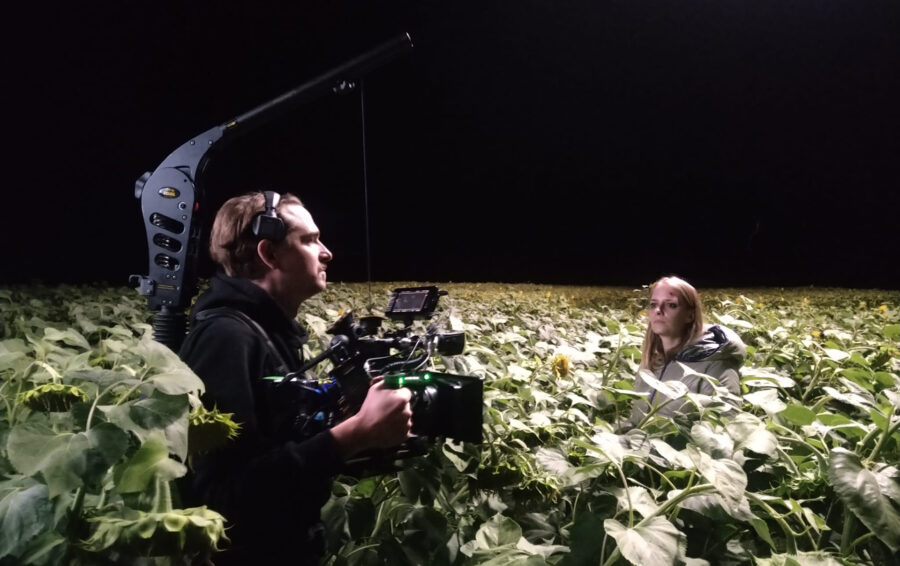
Lighting setup
Q: Alex Haspel, as the gaffer, how did you approach this scene?
Alex Haspel: Well, when reading the script and seeing page after page of “NIGHT/EXT SUNFLOWER FIELD” I remember a bit of cold sweat appearing on my forehead (laughs).
Night exteriors on a budget are never easy and a sunflower field has tons of depth, so we had to figure out how to best do this within our budgetary limitations. I remember us talking a lot about blocking and shot sizes and also involving Achmed very early on into our thought process and planning, to create awareness about which shots and shot sizes we are going to able to light without to much compromise in light quality and what kind of shots might be a bit out of budget range.
And hats off to him and Alexander. They incorporated our limitations extremely well into their blocking and framing. If they wouldn’t have done that as well, I would not have had a chance to light those scenes. At some point, we thought about using a balloon, which would have also been an option for this kind of shot, but we soon arrived at the solution that you can see in the pictures.
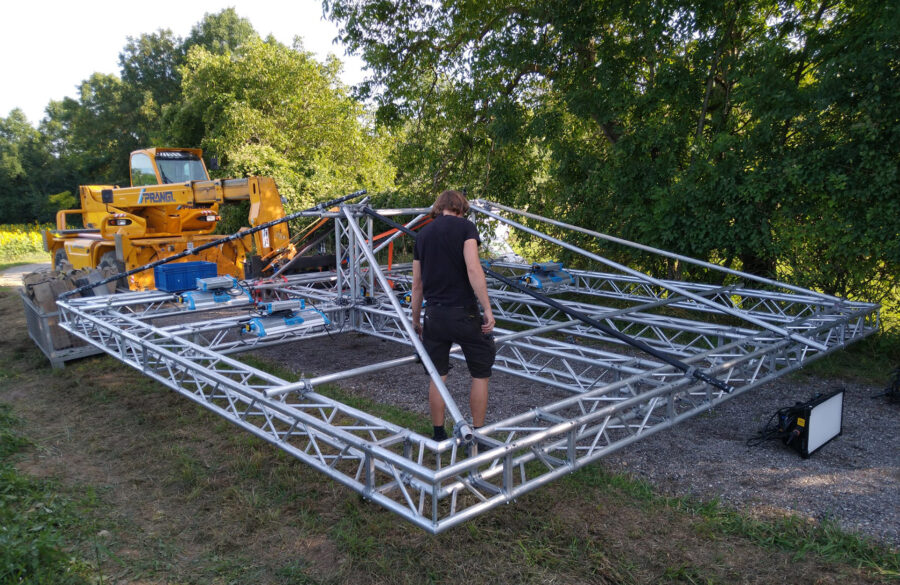
We ended up using a 6×6 meter (20×20 feet) rig on a telehandler, which had an array of 9 Skypanel S60-C LED Softlight, and 4 Robe Spiider moving heads installed on the corners. We controlled all those lamps via Blackout Lightning Console for iPad and Lumenradio-based wireless transmitters and receivers that my friend and Gaffer colleague Markus Harthum built. I also got the idea of using the Robe Spiiders from him, as he had used them just previously on a cherrypicker, as they are dimmable, have a 5-50 degree zoom angle, and can also be panned and tilted using DMX. The Robe Spiider moving heads were great to achieve a smooth transition from the set lit by the overhead rig to the far background and darkness.
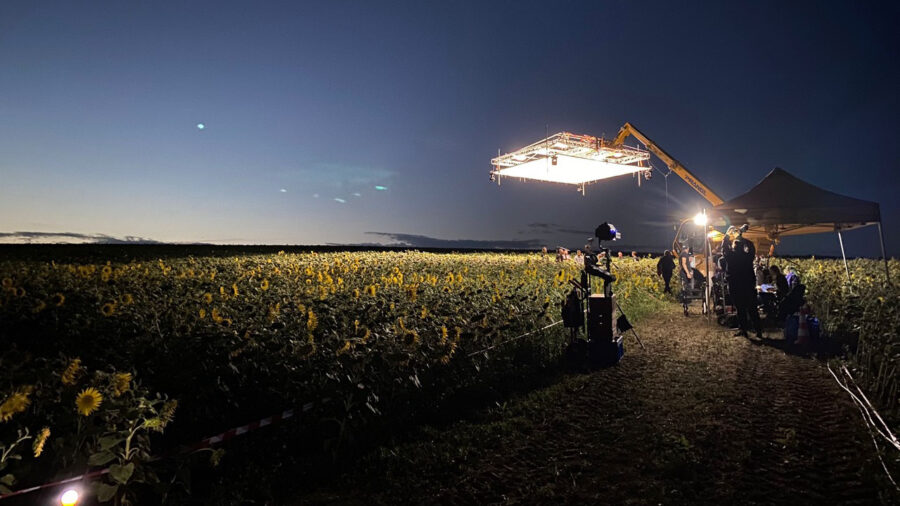
We also used them for fills or as a key light by fully zooming them onto bounce-boards in the field. This was very convenient as using lamps and cables in a very dark and dense field proved to be quite a hassle. We lost quite a few sandbags and good men out there! (laughs).
Q: Were there any problems that you ran into when everything was set up on location?
Alexander Dirninger: We didn’t have real problems with our setup. Most of the things luckily worked out as planned. If the budget would have allowed, it would have been nice to have a bigger rig or even better, a second one, and have the possibility to go higher up with it. In our original blocking ideas, we wanted to do longer continuous movements with our actresses and the camera. That was not really possible since the actresses would soon have been in danger of moving out of the top-lit area. So we tried to adapt our blocking according to the circumstances and still get the atmosphere we wanted for the scene.
Alex Haspel: We did manage to pull off one very difficult shot of our main actress, Cornelia, walking out of the field, which involved her walking a few meters while being sidetracked by the camera and then stepping out of the field. To realize this shot, we programmed the moving heads so that when one got out of the shot on the right side of the frame, it would rotate around to illuminate the section that was coming up on the left-hand side of the shot. Sort of like the scene in Wallace and Gromit where they are on the train and laying down the tracks in front of them (laughs). In an ideal world, we would have had a cherrypicker and some more HMIs for the deep background once she exits the field, but considering we did a night/exterior in a field with one 3-phased 16A line, I like to think we did quite okay, considering our limitations.
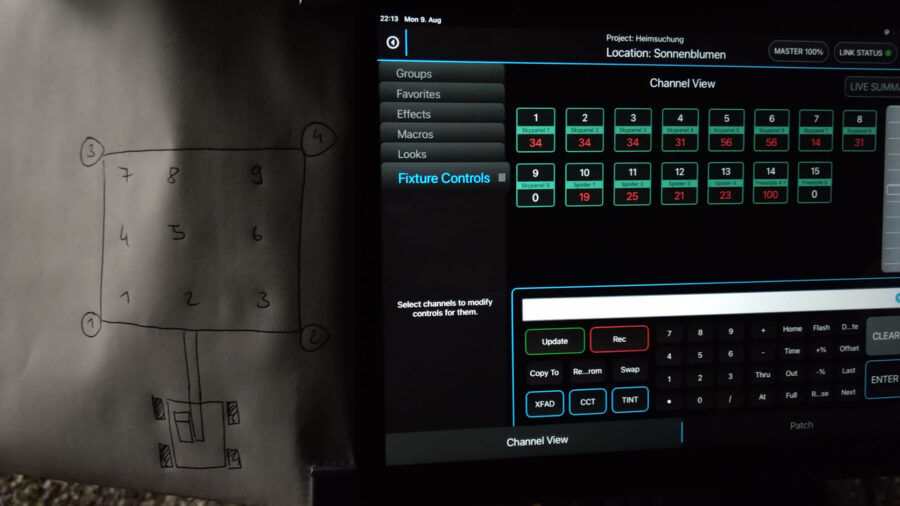
Alexander Dirninger: Especially after the color grading, we were happy with the results we got. We achieved the kind of look and feel we wanted to have for that climactic scene. For many of the people involved, it was the first or second feature-length movie in the head-of position, and we worked together in great team spirit. We all were very motivated to get the most out of that scene as we could.
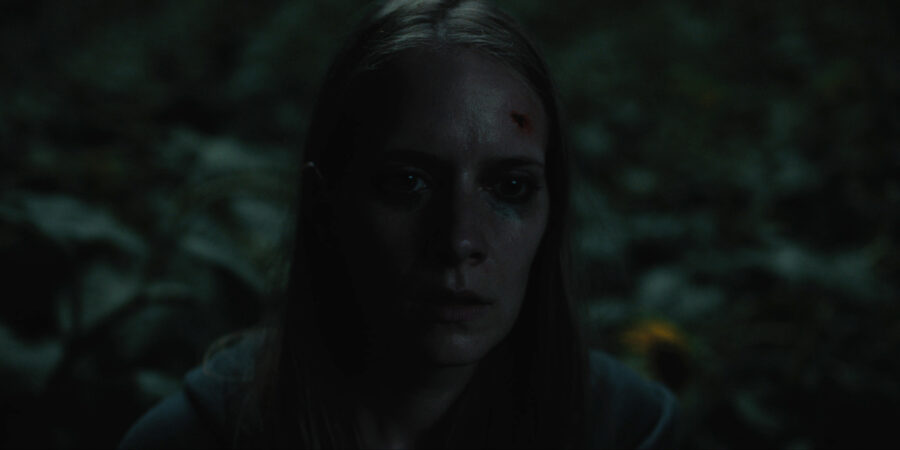
Alex Haspel: Yes, the project for me was a great example of different departments working together in unison, even across various levels of hierarchy. I already mentioned Achmed being very involved in our lighting limitations, but also our producers Eugen and Lena were very involved from early on, and very keen on having the film look the best it could.
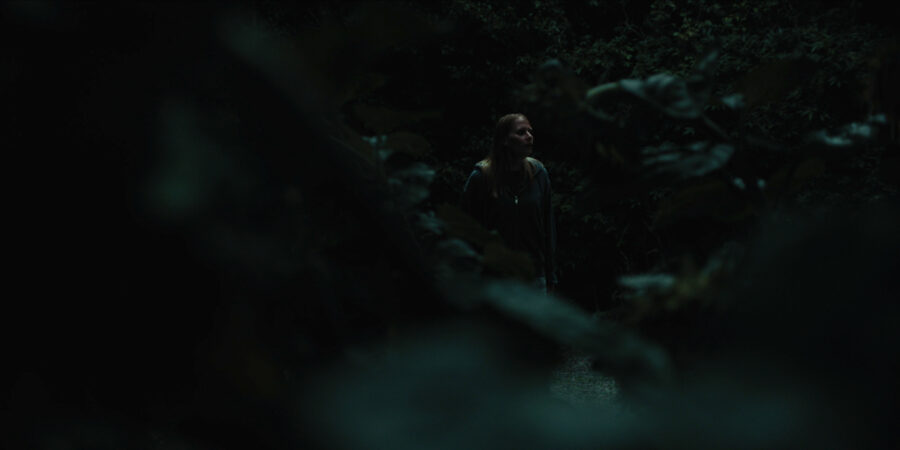
I remember sitting at lunch the week before the week of the big night shoot when they asked if we could talk and took a seat at my table. I had a bit of a Ralph Wiggum “I am in danger” moment as I thought, “Oh no, budget cuts, there goes the telehandler” (laughs).
But to my surprise, they asked if I had everything I needed for the following week, or if they should try to free up a bit more budget for some more personnel or material. Needless to say, I was very pleasantly surprised. I just silently grinned and speechlessly enjoyed that moment (laughs).
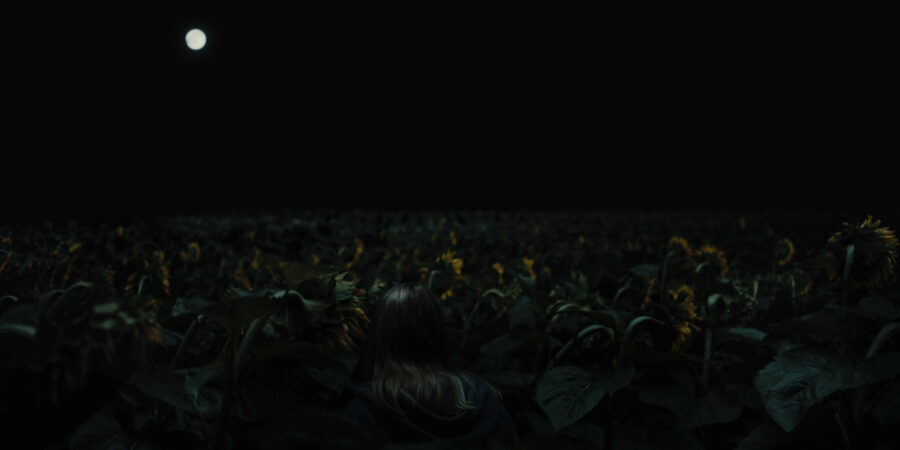
Alexander and I worked together very closely, also with Achmed, the director. There were no shots which was a terrible compromise, which sometimes happens. We managed to get the results we wanted, even on the medium budget that was available to us.
CineD: Thanks for taking the time to share your experiences and all the best for your future projects!
Alexander Dirninger was born in Salzburg. He started his career as a camera assistant and electrician in Munich, and later attended and graduated from the Filmakademie in Vienna, in the class of Wolfgang Thaler. He has been working as a DP in Vienna for many years now.
Alex Haspel is from Vienna and inherited his love for the craft from his father who produced animations, and his father’s best friend who ran a documentary production company. He has since been working in the field taking on many roles, specializing in lighting in recent years. “Heimsuchung” was his second time as a gaffer on a theatrically released feature film.
Feature image credit: Alex Haspel
Did you see the movie “Heimsuchung” at the cinema? What did you think about the look? Share your thoughts in the comments below!
